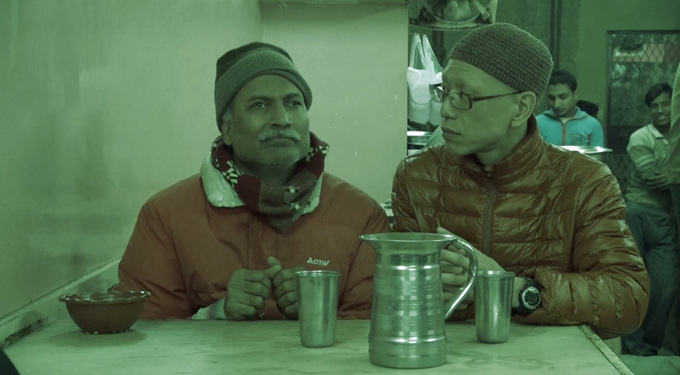The Smell, the Smudges, the Caste System, and the Soup
Aki Yahata
Artist
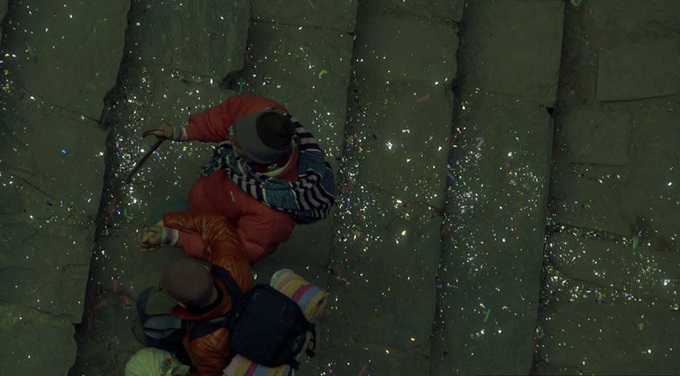
A scene from Yahata's work; a still image
Tota, by Aki Yahata
The seasons changed dramatically during the three weeks I spent in India in January. For the first week, it was winter, with cold mornings and evenings, and a dense, bone-chilling fog. After a week spent shooting the film, I holed up in my hotel room to begin the work of editing. I could see the rain falling intermittently outside the thick window glass, and by the time I left India, warm spring weather had arrived.
The bright yellow North Face jacket I had washed before arriving in India became surprisingly black with soot in just one week of filming, and it had absorbed an unfamiliar smell, too. My coat did not get this filthy even during the ten-day trekking expedition up Mount Everest that I had been on. Is the car exhaust that fills the city air to blame? Sniffing the jacket, I smelled the scent of India itself, and it struck me that there was such a thing as the "India smell." It came in two phases: first, an inorganic, medicinal odor that was followed by the aroma of a combination of spices that lingered deep inside my nose. This was definitely not my own smell. Come to think of it, while in India I had always felt a sense of fullness, as if I was constantly eating Indian curry. That must have been because various elements of India, like the smells that clung to my jacket, had seeped into my body through the pores of my skin, filling me up all the time.
Whenever we moved around the city in a car, beggars would approach us and lean against the car windows, asking for something. One scene sticks out in my mind: one time, a girl wiped the windows of our car using the gloves she had on, then turned to the well-dressed young woman in the driver's seat and waved her hands, asking for money. The girl's eyes were lethargic, yet held an expression of deep, childlike entreaty. The young woman did not pay the slightest attention to her and the girl eventually gave up and left, but a moment later a mother holding a baby in her arms came up and started begging, plastering her palm onto the car window that had just been cleaned by the girl with the gloves. The handprints left on the car windows by one beggar are cleaned off by another, and then yet another beggar comes along and leaves new finger marks. This routine of dirtying and cleaning the car windows is apparently nothing new and it will no doubt go on, tomorrow, and the day after, and the day after that, but for some reason, the incident really engraved itself on my memory.
One thing that left a lasting impression on me during the filming was the caste system, something I had never given a thought to before going to India. I could not set a scene for the characters in my film without overstepping the boundaries of caste. For example, I had asked the actor Somraj to hold a broom in his hand, only to be told it was a bad idea since you would never see a traveling salesman sweeping the floor in India. On another occasion, I asked him to carry a backpack, and again, they told me no one in his class would do that in India. Unusual things happen all the time, no matter where you are, so I figured a few minor deviations could not be such a big deal. My Indian colleagues had an entirely different perspective on the issue, however. According to them, it was not a question of whether or not minor deviations could occur; rather, the question was why anyone would willingly do something that would be considered unclean or demeaning to him. In order to create a film that would be acceptable to the local people, I had to reconcile my own ideas and values with their perceptions of decency, beliefs that coursed through their veins at the DNA level. I struggled during the filming to find the right balance.
Looking back, I remember that the soup I had for my last meal in India had the strangest flavor I have ever tasted. I asked the driver of the auto-rickshaw to take me to a good, cheap local diner and the place he proudly took me to was an establishment with a half-broken table and chairs in the middle of a junk yard. Now, I had been to several local hangouts during my stay, but you could not get more local than this place! The driver recommended that I should try the staggeringly cheap 30 rupee dish (about 50 yen). The dish came with a bowl of milky, pinkish cold liquid with something that looked like Chinese parsley. This soup had an incredibly intense flavor. As I took my first sip, a piercing sensation like the smell of ammonia shot through to the back of my head. It tasted so bizarre that for a moment I thought it was an illusion. To make sure that it wasn't, I took a few more sips. It didn't do my stomach any harm.
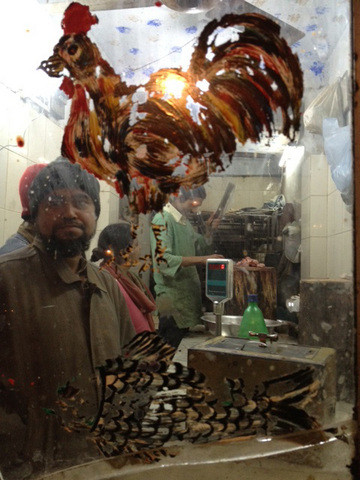
A snapshot of India
Photo: Aki Yahata
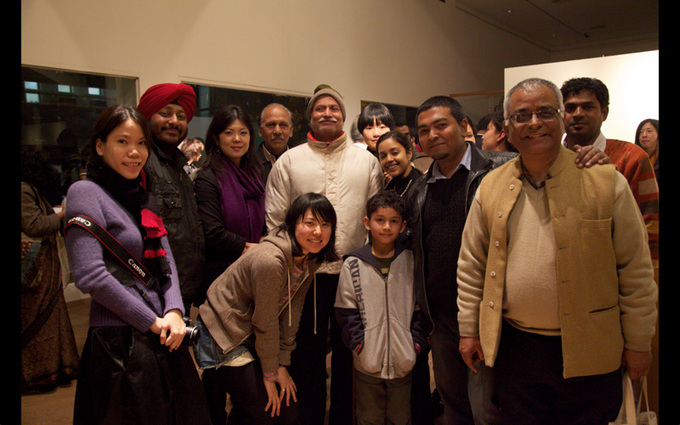
A group photo: Aki Yahata with Somraj, who appeared in her film, the staff members and the curators.
Photo: Daisuke Yamashiro
Omnilogue is a series of group exhibits by three contemporary Japanese artists held in Perth (Australia), New Delhi (India) and Singapore in 2011 - 2012. This is a report by Aki Yahata, one of the artists participating in Exhibition "Omnilogue: Journey to the West", the second exhibition in the series that was held in New Delhi, India.
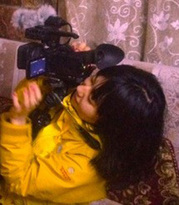 Aki Yahata
Aki Yahata
Born in 1985, Aki Yahata is now pursuing a master's degree at the Department of Fine Arts, Tokyo University of the Arts. She created a film with a deaf Japanese dancer and a blind candle craftsman. Yahata has exhibited her works in the art exhibition "Omnilogue: Journey to the West 2012".
https://www.jpf.go.jp/e/project/culture/archive/information/1112/12-02.html
Back Issues
- 2024.11. 1 Placed together, we …
- 2024.5.24 The 50th Japan Found…
- 2024.5.24 The 50th Japan Found…
- 2024.2.19 Movie Theaters aroun…
- 2024.2.19 Movie Theaters aroun…
- 2023.4.24 The 49th Japan Found…
- 2022.10.24 Inner Diversity <2> …
- 2022.10. 5 Living Together with…
- 2022.6.13 The 48th Japan Found…
- 2022.6. 3 The 48th Japan Found…


